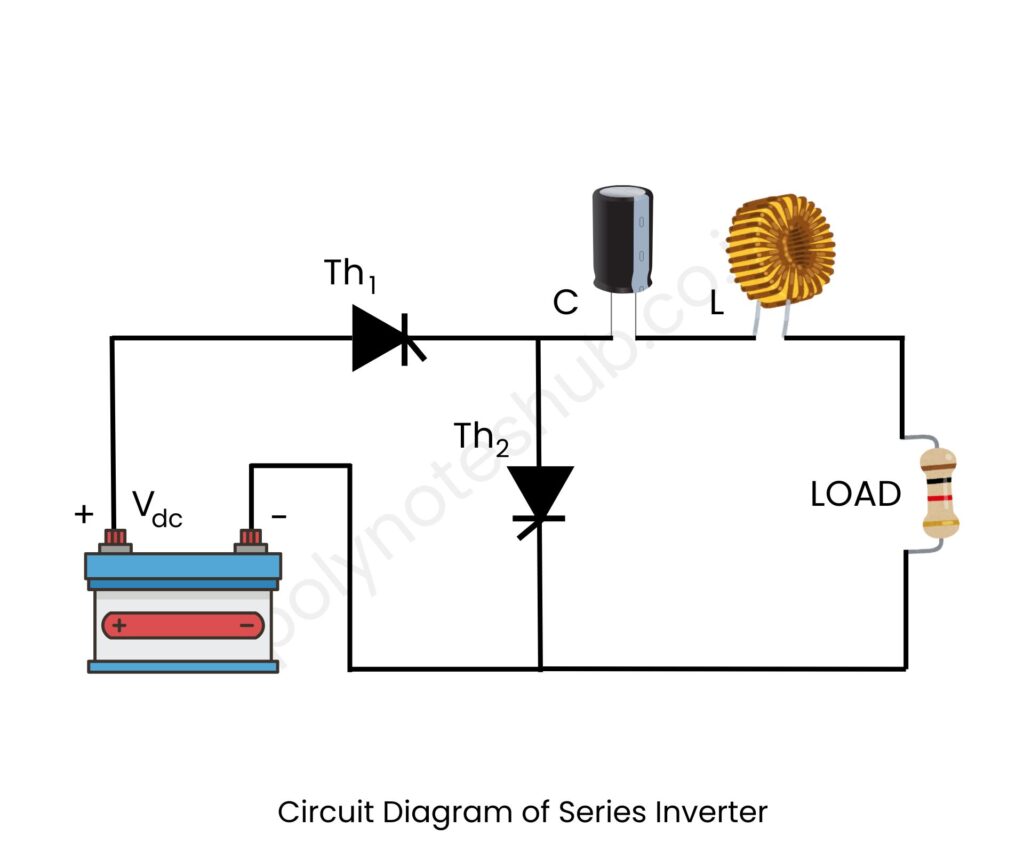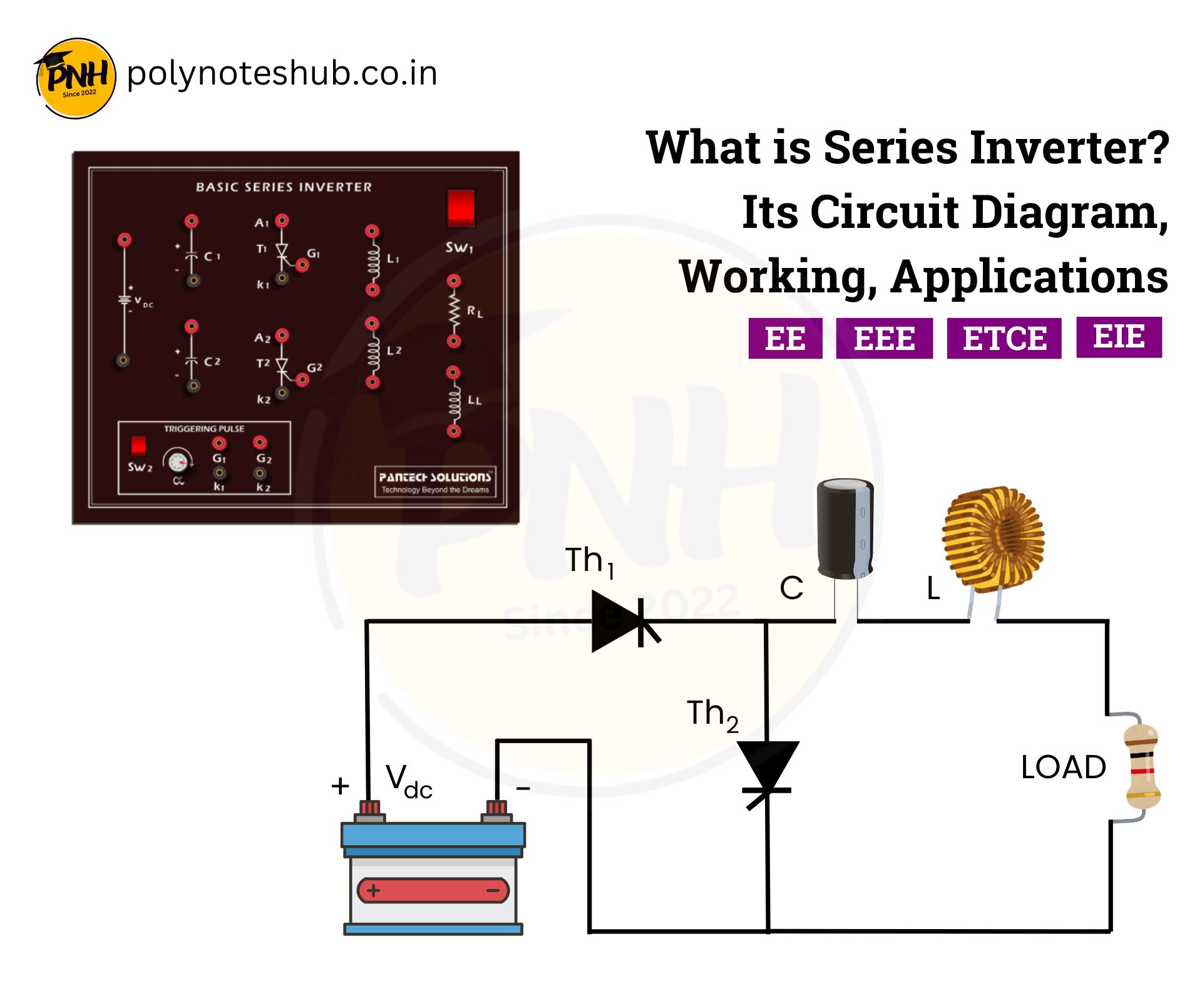In this note, we are going to know about Series Inverter, and about its circuit , working, advantages, disadvantages, and applications as well. Welcome to Poly Notes Hub, a leading destination for electrical engineering notes for diploma and degree engineering students.
Author Name: Arun Paul.
What is Series Inverter?
A series inverter connects the load to the commutating parts (inductor and capacitor). It is commonly employed in high-frequency applications, generating an alternating current (AC) output from a direct current (DC) source. The series inverter is classified as a resonant inverter since it uses the LC circuit’s resonance to generate an AC output.
📌 Specifications of Series Type of Inverter
- Input Voltage: Typically DC input ranging from a few volts to hundreds of volts.
- Output Frequency: High-frequency range, depending on the resonant frequency of the LC circuit.
- Power Rating: Can vary, depending on the design, from a few watts to several kilowatts.
- Switching Devices: Commonly uses thyristors, MOSFETs, or IGBTs.
- Efficiency: High efficiency due to minimal switching losses.
- Load Type: Suitable for resistive or resonant loads.
- Harmonic Content: Lower harmonic distortion compared to other inverters.
- Cooling Requirements: Depends on the power rating and heat dissipation of the components.
Series Inverter Circuit Diagram
Here is the basic circuit diagram of this type of inverter –

- DC Source: Provides the input power.
- Inductor (L): Works with the capacitor to form a resonant circuit.
- Capacitor (C): Determines the resonant frequency.
- Load (R): Connected in series with the LC circuit.
- Switching Devices (e.g., Thyristors): Controls the flow of current and commutation process.
Series Inverter Working Principle
A Series Inverter is a resonant inverter that has the load linked in series with the commutating components, such as an inductor and capacitor. It is commonly employed in high-frequency applications to convert direct current (DC) to alternating current (AC). The circuit is essentially made up of a DC supply, an LC resonant circuit, and switching components such as thyristors or transistors. A series inverter typically has an input DC voltage, a high-frequency AC output, and high efficiency due to low switching losses. It performs efficiently with resistive or resonant loads and produces output with low harmonic distortion.
A series inverter’s working concept is based on the resonant LC circuit. The inductor and capacitor form a resonant system whose frequency is defined by the formula.

Switching devices are used to toggle the current on and off, causing oscillations in the LC circuit. The oscillations produce a sinusoidal AC voltage across the load. The energy stored in the inductor and capacitor alternates, causing oscillations and powering the load.
Advantages of Series Inverter
Here we have listed some advantages of this type of inverter –
- It has minimum switching losses.
- This circuit is suitable for high frequency applications.
- It is requires fewer components compare to other circuit.
- Design is very easy of this circuit.
- It generates a sinusoidal waveform with lower harmonic distortion.
Disadvantages of Series Inverter
Here we have listed some disadvantages of this type of inverter –
- The performance of this circuit is highly dependent on the load.
- The output frequency is determined by the resonant frequency.
- This circuit is requires a precise control on switching.
- Because of its simple circuitry, this type of inverter is not suitable for high power applications.
- The components may experience high voltage stresses during operation.
Series Inverter Applications
Here we have listed some applications of this type of inverter –
- Used in high-frequency induction heating systems.
- Used to lighting high frequency fluorescent lamps.
- For compact and efficient uninterrupted power supply units.
- Used to drive AC motors in industrial equipment.
- Also used in RF power supplies and communication systems.

